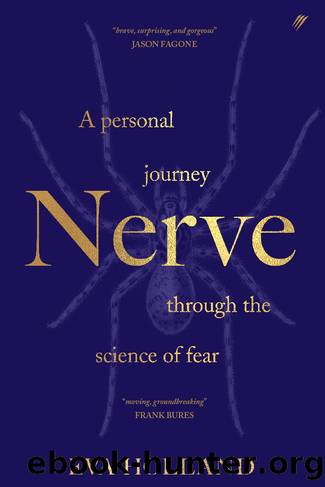Nerve by Eva Holland

Author:Eva Holland
Language: eng
Format: epub
Publisher: Pantera Press
In those early days at the VA, we labeled our veterans with all sorts of diagnoses—alcoholism, substance abuse, depression, mood disorder, even schizophrenia—and we tried every treatment in our textbooks. But for all our efforts it became clear that we were actually accomplishing very little. The powerful drugs we prescribed often left the men in such a fog that they could barely function. When we encouraged them to talk about the precise details of a traumatic event, we often inadvertently triggered a full-blown flashback, rather than helping them resolve the issue. Many of them dropped out of treatment because we were not only failing to help but also sometimes making things worse.
Edna Foa, the Joseph Wolpe disciple who’d taken the lead on intensifying and formalizing exposure therapy for phobias and anxiety, remembered the same void. “We didn’t have any studies on PTSD,” she told me.
In 1980, PTSD was included for the first time in the Diagnostic and Statistical Manual of Mental Disorders. The inclusion at least formalized the problem. Since then, trauma therapy has undergone a revolution, driven in part by an influx of military veterans from the Gulf War and the seemingly endless post-9/11 wars in Iraq and Afghanistan. And as clinicians’ understanding of PTSD has grown, so has our awareness of its staggering reach. We now know that PTSD affects not just soldiers and civilians emerging from war but also drone operators who’ve never left their home base; first responders, from beat cops to search-and-rescue volunteers operating out of luxurious mountain resorts; survivors of car wrecks, assaults, and less obvious forms of trauma. An estimated eight million Americans experience PTSD every year.
During the First World War, the Germans treated their shell-shocked soldiers with electroshock therapy. In the Second World War, hypnosis became a popular option. Over the decades since, treatments for PTSD have often followed the same broad trends as other anxiety-related disorders; there has frequently been overlap between the ways phobias and PTSD are treated.
For instance, exposure therapy, the treatment I’d tried to DIY in an effort to ease my fear of heights. Back in the early 1980s, when the diagnosis was still new, Edna Foa wondered whether the exposure therapy treatment she had developed for phobias and obsessive compulsive disorder might be workable for PTSD too.
“I thought, well, this is an anxiety disorder, there is no reason why we cannot adapt the treatment, the exposure therapy treatment, to PTSD,” she told me.
You can’t re-expose someone to rape or a bomb, so Foa settled on a program of imaginal exposure for the traumatic memory itself, and in vivo, or actual, exposure to the secondary effects: the patient’s avoidance behaviours, which can perpetuate trauma’s power. The imaginal exposure would be conducted in sessions with therapists, and the in vivo exposure came as homework: going to places that reminded the patients of the trauma, or to safe places they perceived as dangerous. That might mean walking a downtown street at night after experiencing a violent assault, or going to malls again after a mass shooting.
Download
This site does not store any files on its server. We only index and link to content provided by other sites. Please contact the content providers to delete copyright contents if any and email us, we'll remove relevant links or contents immediately.
| Anatomy | Animals |
| Bacteriology | Biochemistry |
| Bioelectricity | Bioinformatics |
| Biology | Biophysics |
| Biotechnology | Botany |
| Ecology | Genetics |
| Paleontology | Plants |
| Taxonomic Classification | Zoology |
Sapiens: A Brief History of Humankind by Yuval Noah Harari(13054)
The Tidewater Tales by John Barth(12030)
Do No Harm Stories of Life, Death and Brain Surgery by Henry Marsh(6337)
Mastermind: How to Think Like Sherlock Holmes by Maria Konnikova(6236)
The Thirst by Nesbo Jo(5786)
Why We Sleep: Unlocking the Power of Sleep and Dreams by Matthew Walker(5644)
Sapiens by Yuval Noah Harari(4538)
Life 3.0: Being Human in the Age of Artificial Intelligence by Tegmark Max(4509)
The Longevity Diet by Valter Longo(4446)
The Rules Do Not Apply by Ariel Levy(3906)
The Immortal Life of Henrietta Lacks by Rebecca Skloot(3826)
The Body: A Guide for Occupants by Bill Bryson(3802)
Why We Sleep by Matthew Walker(3773)
Animal Frequency by Melissa Alvarez(3755)
Yoga Anatomy by Kaminoff Leslie(3702)
Barron's AP Biology by Goldberg M.S. Deborah T(3632)
The Hacking of the American Mind by Robert H. Lustig(3580)
All Creatures Great and Small by James Herriot(3517)
Yoga Anatomy by Leslie Kaminoff & Amy Matthews(3396)
